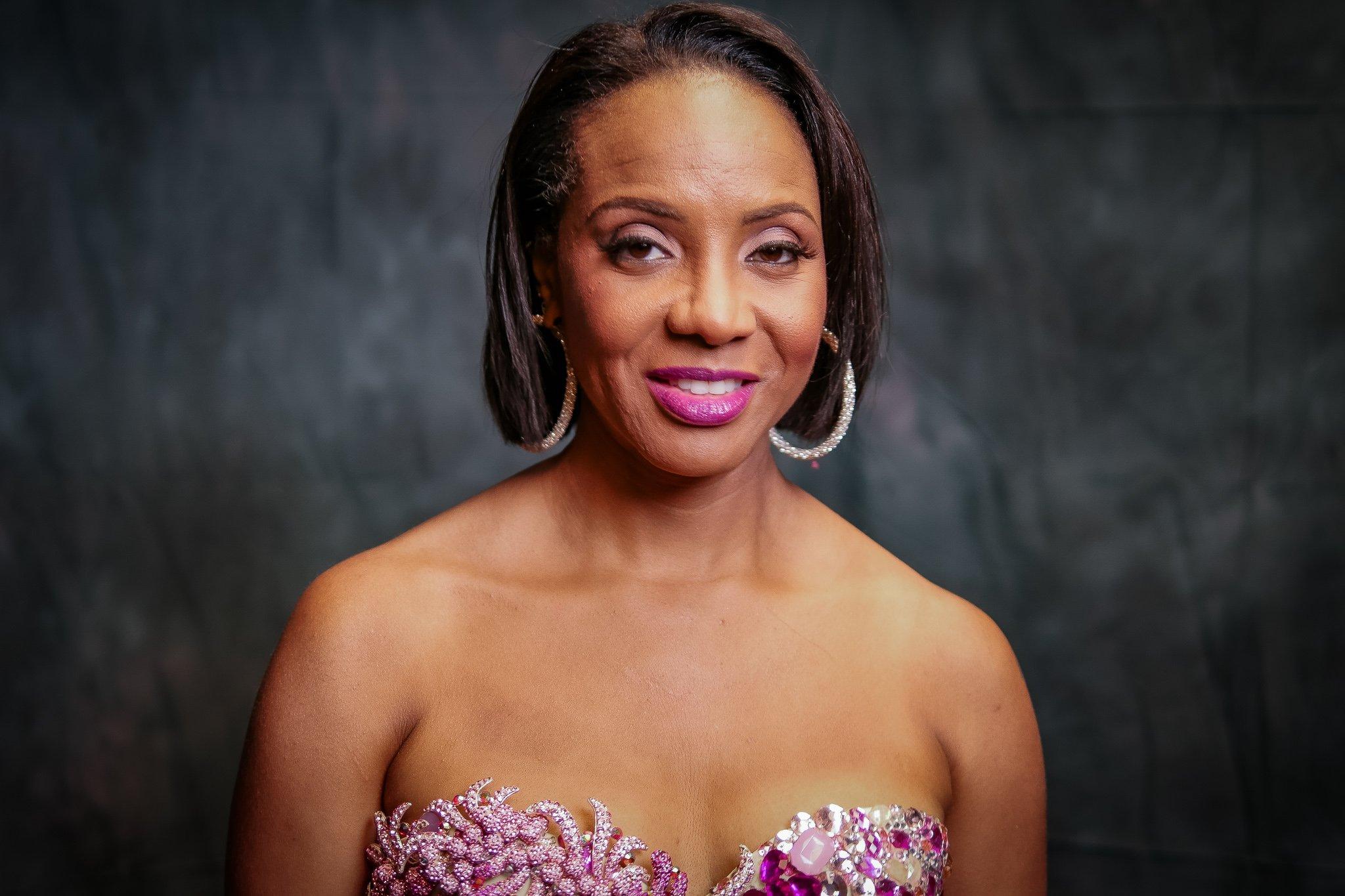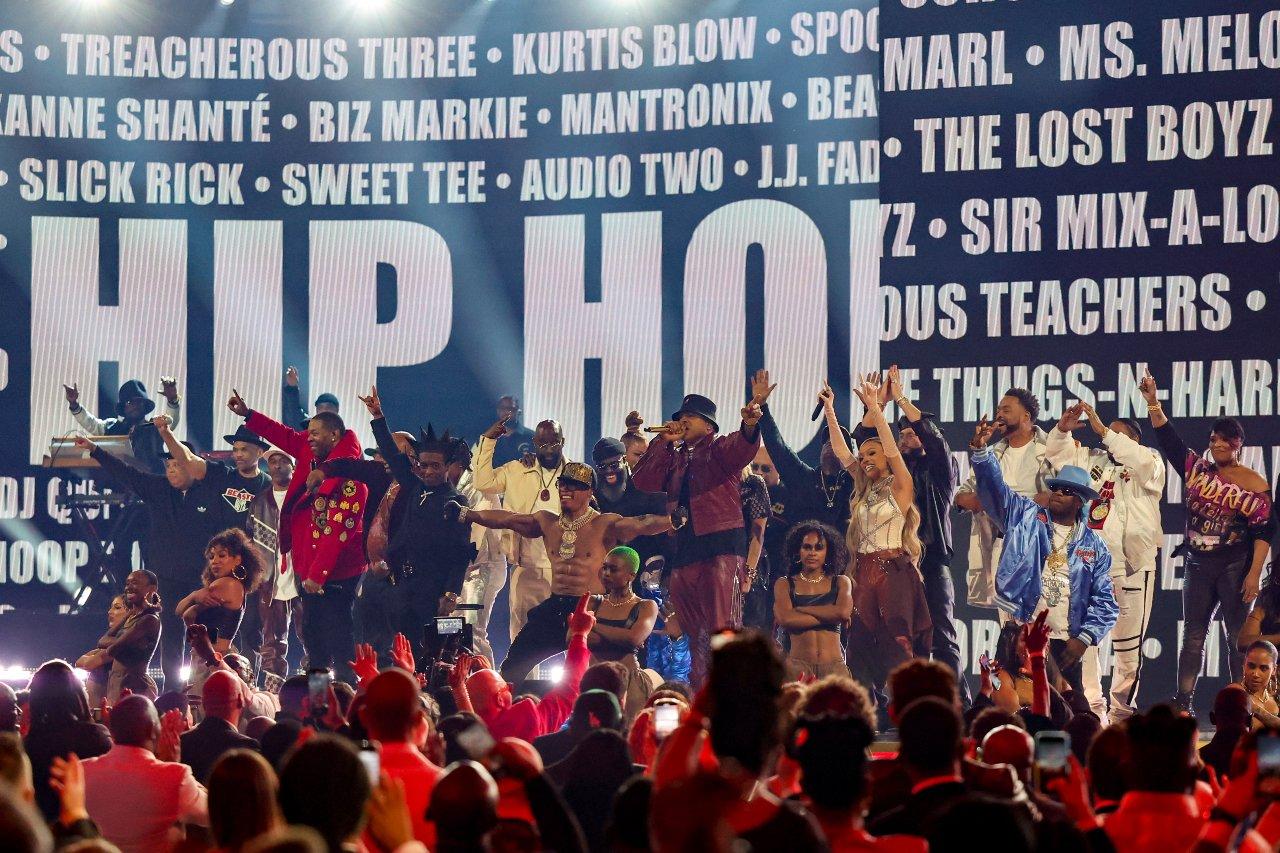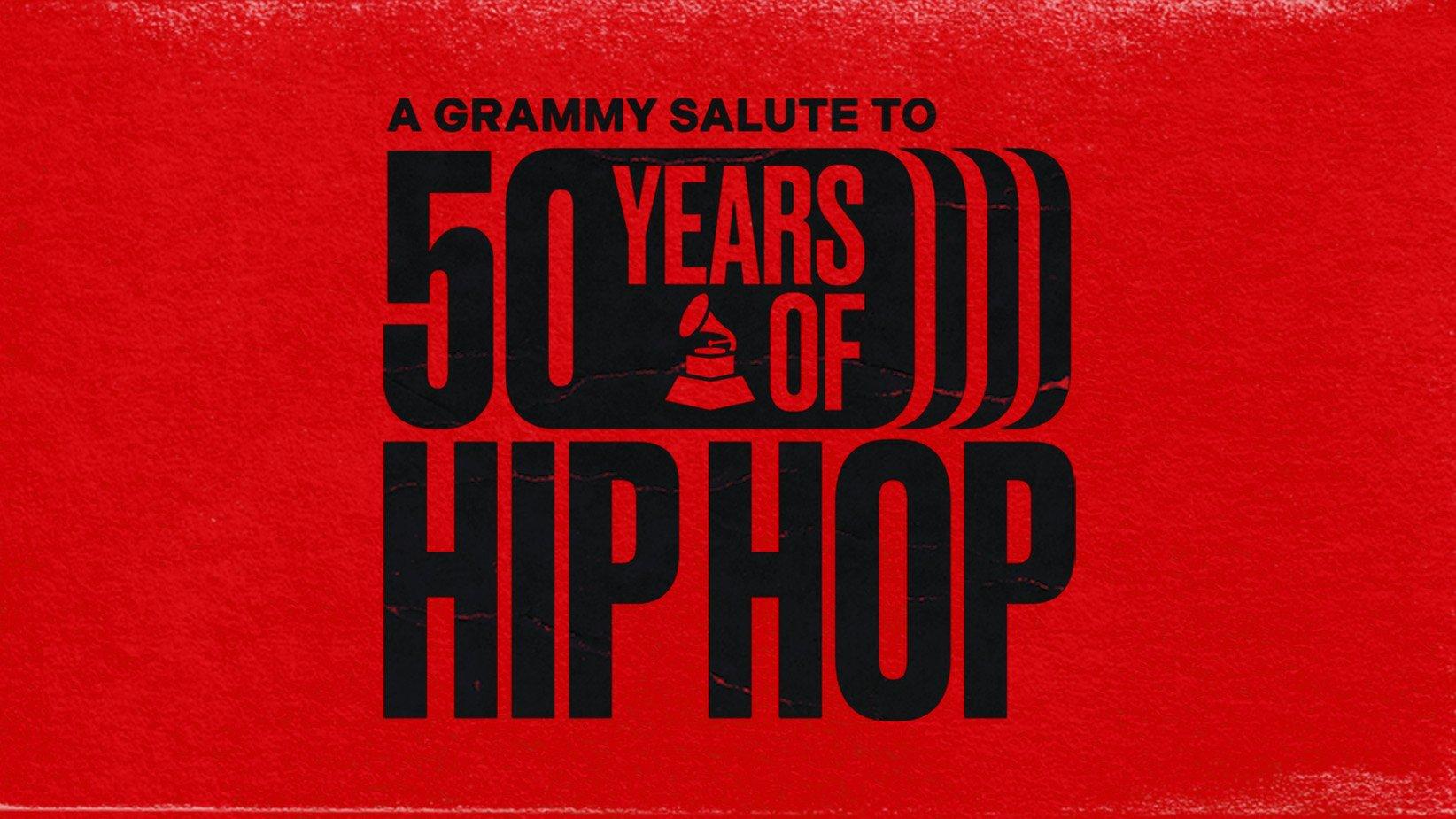Photo: Daniel Mendoza/Recording Academy

MC Lyte
news
MC Lyte On Curating “Women In Hip-Hop” for ESSENCE, Her New Acting Role & Giving Back
We took a beat with Lyte backstage to hear about the all-star female rap event she put together for the 25th ESSENCE Fest in New Orleans and much more
GRAMMY-nominated rap pioneer MC Lyte is a busy woman. She took a quick minute backstage at the 25th ESSENCE Fest this weekend to talk about her latest projects, including curating “Women In Hip-Hop” for the festival, which featured royalty of rap including Trina, Rapsody, Yo-Yo, and more.
Lyte talked about what ESSENCE means to her, as something that didn't exist when she was growing up. "Being able to celebrate Black culture at this magnitude means everything because we’ve never had anything like this," she said. "ESSENCE Music Festival is truly one of a kind.”
<blockquote class="twitter-tweet" data-lang="en"><p lang="en" dir="ltr">The Women in Hip Hop <a href="https://twitter.com/hashtag/EssenceFest?src=hash&ref_src=twsrc%5Etfw">#EssenceFest</a> After Dark show at <a href="https://twitter.com/RepublicNOLA?ref_src=twsrc%5Etfw">@RepublicNOLA</a> was Who’s ready for day two tomorrow? <a href="https://t.co/CH4l1dSRcj">pic.twitter.com/CH4l1dSRcj</a></p>— ESSENCE (@Essence) <a href="https://twitter.com/Essence/status/1147040635452612610?ref_src=twsrc%5Etfw">July 5, 2019</a></blockquote><script async src="https://platform.twitter.com/widgets.js" charset="utf-8"></script>
She also talked about her upcoming role on “New York Undercover,” where she plays a detective, and detailed some of her recent philanthropic work supporting students with her international non-profit foundation Hip-Hop Sisters.
Rapsody Reveals The Influential Black Women Behind Her New Album 'Eve' At ESSENCE Fest

Photo: The Chosunilbo JNS/Imazins via Getty Images
list
New Music Friday: Listen To New Songs From LISA From Blackpink, Lil Nas X, Kelsea Ballerini, MC Lyte & More
Hot summer days require even hotter tunes. Here are some fresh-out-the-oven songs and albums by Hiatus Kaiyote, Lucky Daye, Headie One, Kaitlin Butts, and more.
We’ve been feeling the heat for a minute now, but summer is finally, officially, upon us.
What do you have on deck to soundtrack it? Perhaps you’re checking out Camila Cabello’s fourth offering, C,XOXO. Or Jxdn’s expectations-bucking new album, When the Music Stops. And there are so many other worthy candidates for your playlist — from Lupe Fiasco’s Samurai to Omar Apollo’s God Said No.
No matter where your stylistic compass points, this Friday release day has got something for you. As you gather your sunscreen and shades, let’s breeze through a cross-section of what’s out there.
LISA — "Rockstar"
K-pop loves its solo releases, showcasing how the various members of a group can shine individually while combining with ecstatic chemistry. Enter LISA, one-fourth of Korean titans BLACKPINK, who's already turned heads with her 2021 debut album, Lalisa.
"Rockstar" is another swing outside her main gig, featuring serrated chiptune production and LISA's commanding rap flow. The gritty, urban, futuristic video is a visual treat, and the chorus's boast of "Lisa, can you teach me Japanese?" is a multilingual flex — as well as a maddeningly unshakeable earworm.
Kelsea Ballerini & Noah Kahan — "Cowboys Cry Too"
The "Peter Pan" heavyweight and four-time GRAMMY nominee Kelsea Ballerini has called 2024 "a new chapter of music." Her collaboration with folk/pop singer/songwriter Noah Kahan, "Cowboys Cry Too," is the tip of the spear.
More than a month after the pair performed together at the 2024 Academy of Country Music Awards, their first recorded team-up is an aching, yearning ballad about breaking down a gruff exterior and revealing true emotions.
"Cowboys cry too/ They may not let 'em fall down in their hometown thinkin' they still got s*** to prove," Ballerini sings in the chorus. "That well runs deep/ But when he's showin' his skin, lettin' mе in, that's when he's toughest to mе."
Lil Nas X — "Here We Go!" (from the Netflix film 'Beverly Hills Cop: Axel F')
"So excited to release the best song of all time this friday!," Lil Nas X proclaimed on Instagram. (And on a Beverly Hills Cop soundtrack, no less!)
"Here We Go!" comes at an inflection point for the "J Christ" singer: "sorry I've been so scared with my art lately," he added in the same post. "I'm coming around to myself again. I will make you guys very proud."
This pro forma banger certainly inspires pride: tenacious lines like "I'm livin' and livin' I wanna die/ They tryna get even/ I'm beatin' the odds" will get under your skin. As for Beverly Hill Cop: Axel F, the Eddie Murphy joint will whiz to your screen July 3 via Netflix.
Lucky Daye — 'Algorithm'
Lucky Daye picked up a win for Best Progressive Album at the 2022 GRAMMYs, for Table for Two. After a slew of nominations for work with Beyoncé and Mary J. Blige, he's investigating the Algorithm.
The single "HERicane" was just a teaser, with songs like "Blame," featuring Teddy Swims; "Paralyzed," featuring RAYE;" and "Diamonds in Teal" expanding on and honing his soul-funk-R&B vision.
"Don't know pickin' sides/ 'Cause I'm rollin' in desire," he dreamily sings in the gently roiling "Diamonds in Teal." "I don't know which lie's true/ Or maybe I do, or maybe I'm you." It's a suitable mission statement wrapped in a stealthily seductive package.
Hiatus Kaiyote — 'Love Heart Cheat Code'
A jazzy, soulful, psychedelic band of Aussies, Hiatus Kaiyote has been wowing audiences for more than a decade. Whether through sampling or features, they've crossed paths with Drake, Anderson .Paak, and Beyoncé and Jay-Z.
Love Heart Cheat Code builds brilliantly on their last three albums: their 2012 debut Tawk Tomahawk, 2015's Choose Your Weapon, and 2021's Mood Valiant. Tracks like "Telescope," "Everything's Beautiful," and "Make Friends" are burbling brooks of atmosphere, groove and vibe.
Boulevards — 'Carolina Funk: Barn Burner on Tobacco Road'
Any fans of deep, pungent funk grooves should investigate Boulevards immediately. The project of mastermind Jamil Rashad, their new album Carolina Funk: Barn Burner on Tobacco Road tips its hat to yesterday's funk with a contemporary twist, bringing a refreshing spin on the well-trod template of syncopated basslines and stabbing horns.
Across highlights like "Do It Like a Maniac Part 1&2" and "Run & Move," Boulevards shows — once again — that few can nail this gritty sound quite like Rashad and crew.
Headie One — 'The Last One'
British drill-inflected MC Headie One first made a splash overseas with his 2023 debut album, Strength to Strength. Less than a year later, he's returning with The Last One.
Back in 2022, he hinted at the existence of his sophomore album in his non-album track "50s" — "The fans calling for 'Martin's Sofa'/ It might be the first single from my second," he rapped.
Helmed by that single, The Last One features Potter Payper, Stormzy, Fridayy, Skrillex, and more. The album is a leap forward in terms of production, scale and exploration.
Katlin Butts — 'Roadrunner!'
Any theater kid worth their salt knows at least a few bars from the musical "Oklahoma!"; country sensation Kaitlyn Butts has just unfolded it into an entire album.
"It's a love story but there's also a murder and a little bit of an acid-trippy feel to it at times; it's set in the same place where I come from," she said in a statement, noting she saw "Oklahoma!" with her parents every summer during childhood. "Once I got the idea for this album," she continued, "I couldn't believe I hadn't thought of it before, and it turned into something that completely encompasses who I am and what I love."
A laugh riot as well as a colorful, openhearted statement, Roadrunner! does the old Rodgers and Hammerstein chestnut good.
Read more: 5 Female Artists Creating The Future Of Country Music: Jaime Wyatt, Miko Marks & More
Amaarae — 'roses are red, tears are blue — Fountain Baby Extended Play'
Futurist Afropopper Amaarae made a gigantic splash with her second album, 2023's Fountain Baby — even Pitchfork gave it their coveted Best New Music designation.
That lush, enveloping album just got an expansion pack: roses are red, tears are blue — A Fountain Baby Extended Play is a continuation of its predecessor with six new songs. The oceanic "wanted," featuring Naomi Sharon, is a highlight, as is a remix of "Disguise" with 6LACK.
"Ooh, I'll be wanted/ I've been wanted," a pitch-shifted Sharon sings near the end, as if turning over the phrase. "Wanted" is one way to describe Amaraae's position in the music landscape.
Learn more: Meet The Latest Wave Of Rising Afrobeats Stars: AMAARAE, BNXN, Oladapo & More
MC Lyte — "King King" (feat. Queen Latifah)
The 50th anniversary of hip-hop may have come and gone, but hip-hop is forever. Today, legendary hip-hop pioneers MC Lyte and Queen Latifah continue to bear the flame of the genre as an elevating force with "King King," a conscious, uplifting offering.
"This is dedicated to all the kings and all the soon to be kings/ We're counting on you/ We love you/ This is for you, you and you and you," MC Lyte begins, while Latifah holds it down on the chorus with "This your crown hold it/ Even if it all falls down show it/ You know the world is watching now I know you get tired from keepin' it all together/ We need you."
During Women's History Month in March, MC Lyte released "Woman," the first single from her upcoming album, featuring hip-hop icons Salt (of Salt 'N Pepa), Big Daddy Kane, and R&B singer Raheem DeVaughn. MC Lyte's first new album in nearly a decade drops this summer; keep your eyes and ears peeled.
Learn more: 9 Teen Girls Who Built Hip-Hop: Roxanne Shante, J.J. Fadd, Angie Martinez & More
Latest News & Exclusive Videos

2024 Paris Olympics Opening Ceremony: Watch Celine Dion, Lady Gaga, Gojira & More Perform

Ice Spice Is The Drill Queen On 'Y2K!': 5 Takeaways From Her Debut Album

New Music Friday: Listen To New Songs From Halsey, MGK And Jelly Roll, XG & More

Watch Young MC Win Best Rap Performance In 1990

The Red Clay Strays Offer A New Kind Of Religion With 'Made By These Moments'

Photo: Robert Gauthier / Los Angeles Times via Getty Images
list
GRAMMY.com’s 50th Anniversary Of Hip-Hop Coverage: A Recap
The Recording Academy’s celebration of hip-hop’s 50th anniversary included televised events and captivating interviews. Check out the wide range of articles and features produced by GRAMMY.com commemorating this musical milestone.
When we look back at the Recording Academy’s 2023, the 50th anniversary of hip-hop will loom exceptionally large.
The ongoing celebration permeated every facet of the world’s leading society of music professionals this year, from the 65th Annual Awards Ceremony in February to the special airing of "A GRAMMY Salute To Hip-Hop" in December — a dense, thrillingly kaleidoscopic televised tribute to the breadth of this genre.
One major accompaniment to this was coverage of the genre’s legacy via GRAMMY.com, the editorial site run by the Recording Academy. If you haven’t been keeping up, we’ve got you covered. Here’s a highlight reel of the work GRAMMY.com published in honor of the 50th anniversary of hip-hop.
We Profiled Rising Stars
From Lola Brooke to Tkay Maidza, GRAMMY.com engaged in comprehensive in-depth interviews with artists who are at the forefront of shaping the future of hip-hop, and held a roundtable discussion about exactly what the next 50 years might look like.
We Published Conversations With Legends
DJ Kool Herc and Questlove, who have played unquestionable roles in hip-hop’s continuing evolution, spoke to GRAMMY.com about their profound and abiding connections to the idiom.
The Contributions Of Women Were Highlighted
Without the inspired vision of countless women, hip-hop would not be what it is today. The "Ladies First" segment, which kicked off "A GRAMMY Salute To Hip-Hop" featuring Queen Latifah, Monie Love, and MC Lyte, among other lady greats with Spinderella as DJ, was an ode to this.
In acknowledgment of female trailblazers in a world dominated by men, GRAMMY.com wrote about teen girl pioneers, women behind the scenes, a revealing Netflix doc, and women artists pushing the genre forward in 2023, from Ice Spice to Lil Simz.
We Revisted Hip-Hop’s Biggest Releases
From Enter The Wu-Tang (36 Chambers) to Jay-Z’s The Black Album to Cardi B’s Invasion of Privacy, GRAMMY.com dove deep into the core hip-hop canon. We also broke down the genre’s development decade by decade through the 70s, 80s, 90s, 00s, 10s, and 20s, with a focus on classic albums from each era.
We Criss-Crossed The Country
GRAMMY.com’s series of regional guides — from the Bay Area and SoCal, to Texas and the Dirty South, to D.C. and NYC — highlight hip-hop’s diversity of culture and sound.
We Went International
Although hip-hop is a quintessentially American phenomenon, its impact, appeal, and influence has spread worldwide. The international appetite for hip-hop was showcased in coverage of Latinx and Argentinian rappers to know, as well as five international hip-hop scenes to know: France, Nigeria, Brazil, South Africa, and England.
We Explored Hip-Hop’s Larger Impact
Hip-hop is more than a sound. It’s a culture that permeates almost every sector of life. Showcasing this effervescence, GRAMMY.com ran pieces about the evolution of hip-hop’s influence on educational curriculum worldwide, as well as its biggest fashion and style moments.
We Covered On Stage Celebrations
"A GRAMMY Salute To 50 Years Of Hip-Hop," the two-hour special that aired in December on CBS and is available on demand on Paramount+ represented a culmination of the Recording Academy’s 50th year anniversary celebration.
Revisit the 2023 GRAMMYs’ hip-hop revue, and check out a recap of "A GRAMMY Salute" with photos, a rundown of all the performers and songs and coverage of the Black Music Collective’s Recording Academy honors in February.
It Didn’t Stop There…
Notable coverage also included the evolution of the mixtape, 11 Hip-Hop Subgenres to Know and 10 Binge-worthy Hip-Hop Podcasts, as well as a breakdown of Jay-Z’s Songbook and Snoop Dogg’s discography.
For everything GRAMMY.com and all things hip-hop — including our rap-focused run in the GRAMMY Rewind series — visit here.

Image courtesy of the Recording Academy
news
Additional Performers Added To "A GRAMMY Salute to 50 Years of Hip-Hop" Live Concert Special: 2 Chainz, T.I., Gunna, Too $hort, Latto, E-40, Big Daddy Kane, GloRilla, Three 6 Mafia & More Confirmed
The star-studded tribute will take place Wednesday, Nov. 8, at YouTube Theater at Hollywood Park in Inglewood, California. Tickets are on sale now. "A GRAMMY Salute to 50 Years of Hip-Hop" will air on Sunday, Dec. 10, on CBS and Paramount+.
This article was updated Sunday, Dec. 10, to add the full performer lineup.
The massive lineup for the "A GRAMMY Salute to 50 Years of Hip-Hop" live concert special just got bigger and more legendary with the addition of rap icons and next-gen hip-hop superstars: 2 Chainz, T.I., Gunna, Too $hort, Latto, E-40, Big Daddy Kane, GloRilla, Juvenile, Three 6 Mafia, Cypress Hill, Jeezy, DJ Quik, MC Lyte, Roxanne Shanté, Warren G, YG, Digable Planets, Arrested Development, Spinderella, Black Sheep, and Luniz have all been added to the lineup.
They join previously announced performers Black Thought, Bun B, Common, De La Soul, Jermaine Dupri, J.J. Fad, Talib Kweli, The Lady Of Rage, LL COOL J, MC Sha-Rock, Monie Love, The Pharcyde, Queen Latifah, Questlove, Rakim, Remy Ma, Uncle Luke, and Yo-Yo, who will perform at a once-in-a-lifetime live concert special celebrating the 50th anniversary of hip-hop, which the Recording Academy is honoring all year long across 2023. See the full performer lineup.
Airing Sunday, Dec. 10, at 8:30 p.m. ET/8 p.m. PT on the CBS Television Network and streaming live and on demand on Paramount+, "A GRAMMY Salute to 50 Years of Hip-Hop" is a two-hour live concert special that will showcase the profound history of hip-hop and celebrate the genre's monumental cultural impact around the world. The special will feature exclusive performances from hip-hop legends and GRAMMY-winning artists and much more.
The live concert comprising the "A GRAMMY Salute To 50 Years Of Hip-Hop" special, which is open to the public, will take place on Wednesday, Nov. 8, at YouTube Theater at Hollywood Park in Inglewood, California. Footage from the concert will then air on Sunday, Dec. 10, as a live concert TV special.
Explore More Of "A GRAMMY Salute to 50 Years of Hip-Hop"
6 Highlights From "A GRAMMY Salute To 50 Years Of Hip-Hop": Performances From DJ Jazzy Jeff & The Fresh Prince, Queen Latifah, Common & More
Here’s All The Performers And Songs Featured At "A GRAMMY Salute To 50 Years Of Hip-Hop"
Watch Backstage Interviews From "A GRAMMY Salute To 50 Years Of Hip-Hop" Featuring LL Cool J, Questlove, Warren G & E-40, And Many More
How DJ Jazzy Jeff & The Fresh Prince Created The Ultimate Prototype For The Producer/Rapper Duo
For Questlove, "A GRAMMY Salute To 50 Years Of Hip-Hop" Is Crucial For Rap's Legacy
How Lin-Manuel Miranda Bridged The Worlds Of Broadway & Hip-Hop
How To Watch "A GRAMMY Salute To 50 Years Of Hip-Hop": Air Date, Performers Lineup, Streaming Channel & More
Full Performer Lineup For "A GRAMMY Salute To 50 Years Of Hip-Hop" Announced: Roddy Ricch, Chance The Rapper, Nelly, Coi LeRay, Akon, Mustard & More Artists Added
DJ Jazzy Jeff And The Fresh Prince To Reunite Onstage At "A GRAMMY Salute To 50 Years Of Hip-Hop"

"A GRAMMY Salute To 50 Years Of Hip-Hop" Airs Sunday, Dec. 10: Save The Date
Full concert details are below:
Concert:
Wednesday, Nov. 8, 2023 (tonight)
Doors: 6 p.m. PT
Concert: 7 p.m. PT
Venue:
YouTube Theater
1011 Stadium Dr.
Inglewood, CA 90305
Full List Of Confirmed Performers For "A GRAMMY Salute To 50 Years Of Hip-Hop":
Battlecat
Black Sheep
Blaqbonez
DJ Diamond Kuts
DJ Greg Street
DJ Jazzy Jeff and the Fresh Prince
DJ Trauma
^Names in bold indicate newly added artists.
Stay tuned to GRAMMY.com for more news and updates about "A GRAMMY Salute to 50 Years of Hip-Hop."
A GRAMMY Salute to 50 Years of Hip-Hop is produced by Jesse Collins Entertainment. Jesse Collins, Shawn Gee, Dionne Harmon, Claudine Joseph, LL COOL J, Fatima Robinson, Jeannae Rouzan-Clay, and Ahmir "Questlove" Thompson for Two One Five Entertainment serve as executive producers and Marcelo Gama as director of the special.
Hip-Hop Just Rang In 50 Years As A Genre. What Will Its Next 50 Years Look Like?

Photo: Jeff Kravitz/FilmMagic
video
GRAMMY Rewind: Kendrick Lamar Honors Hip-Hop's Greats While Accepting Best Rap Album GRAMMY For 'To Pimp a Butterfly' In 2016
Upon winning the GRAMMY for Best Rap Album for 'To Pimp a Butterfly,' Kendrick Lamar thanked those that helped him get to the stage, and the artists that blazed the trail for him.
Updated Friday Oct. 13, 2023 to include info about Kendrick Lamar's most recent GRAMMY wins, as of the 2023 GRAMMYs.
A GRAMMY veteran these days, Kendrick Lamar has won 17 GRAMMYs and has received 47 GRAMMY nominations overall. A sizable chunk of his trophies came from the 58th annual GRAMMY Awards in 2016, when he walked away with five — including his first-ever win in the Best Rap Album category.
This installment of GRAMMY Rewind turns back the clock to 2016, revisiting Lamar's acceptance speech upon winning Best Rap Album for To Pimp A Butterfly. Though Lamar was alone on stage, he made it clear that he wouldn't be at the top of his game without the help of a broad support system.
"First off, all glory to God, that's for sure," he said, kicking off a speech that went on to thank his parents, who he described as his "those who gave me the responsibility of knowing, of accepting the good with the bad."
Looking for more GRAMMYs news? The 2024 GRAMMY nominations are here!
He also extended his love and gratitude to his fiancée, Whitney Alford, and shouted out his Top Dawg Entertainment labelmates. Lamar specifically praised Top Dawg's CEO, Anthony Tiffith, for finding and developing raw talent that might not otherwise get the chance to pursue their musical dreams.
"We'd never forget that: Taking these kids out of the projects, out of Compton, and putting them right here on this stage, to be the best that they can be," Lamar — a Compton native himself — continued, leading into an impassioned conclusion spotlighting some of the cornerstone rap albums that came before To Pimp a Butterfly.
"Hip-hop. Ice Cube. This is for hip-hop," he said. "This is for Snoop Dogg, Doggystyle. This is for Illmatic, this is for Nas. We will live forever. Believe that."
To Pimp a Butterfly singles "Alright" and "These Walls" earned Lamar three more GRAMMYs that night, the former winning Best Rap Performance and Best Rap Song and the latter taking Best Rap/Sung Collaboration (the song features Bilal, Anna Wise and Thundercat). He also won Best Music Video for the remix of Taylor Swift's "Bad Blood."
Lamar has since won Best Rap Album two more times, taking home the golden gramophone in 2018 for his blockbuster LP DAMN., and in 2023 for his bold fifth album, Mr. Morale & the Big Steppers.
Watch Lamar's full acceptance speech above, and check back at GRAMMY.com every Friday for more GRAMMY Rewind episodes.
10 Essential Facts To Know About GRAMMY-Winning Rapper J. Cole
